Pictures of wild chrysanthemum the efficacy and function of wild chrysanthemum
Wild chrysanthemum is no stranger to many people, and sometimes we will see it on the roadside when walking on the road. Wild chrysanthemum is mostly small and cute, and it has good medicinal value. Let's learn about wild chrysanthemum.
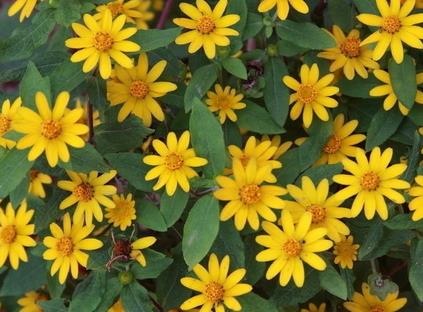
About wild chrysanthemum
Wild chrysanthemum (scientific name: Dendranthema indicum) is a perennial herb of Compositae. The shape of the head of wild chrysanthemum is similar to that of chrysanthemum, and it is wild in hillside grassland, field edge, roadside and other wild areas. It is better to be sessile, intact, bitter and not fully blooming. Wild chrysanthemum is warm in nature, with evacuation of wind and heat, detumescence and detoxification. Can treat eczema carbuncle swelling, sore throat, wind fire red eyes, headache and vertigo and other symptoms.
Inflorescences are globose, 0.3~1cm in diameter, brownish yellow. The involucre consists of 4-5 layers of bracts. Ligulate flowers in a whorl, yellow, wrinkled and curled; tubular flowers numerous, dark yellow. Light. Qi Xin, bitter taste, a little poison.
Wild chrysanthemum is the head of wild chrysanthemum, a perennial herb of Compositae, which is similar to chrysanthemum in shape, and wild chrysanthemum is the head of wild chrysanthemum and rock chrysanthemum. Wild chrysanthemum perennial herbs, born on hillsides and grasslands, etc. Alias: wild chrysanthemum, wild yellow chrysanthemum, bitter chrysanthemum. Wild chrysanthemum head globose, brownish yellow, involucral bracts 4-5 layers, fragrant gas, bitter taste. The wild chrysanthemum flower is bitter, bitter and slightly cold, returning to the liver and the heart meridian. It has the effect of clearing away heat and detoxification, and can be widely used in the treatment of eczema, sore throat, wind fire, red eyes, headache, vertigo and other diseases. At the same time, it has a good antihypertensive effect, which can be used in the adjuvant treatment of hypertension.
Wild chrysanthemum, which belongs to perennial herbs, florescence from September to November, fruit period from October to November, and its general height is 25-100cm. Stem several steps often creeping, upper part much branched. Leaves alternate, ovate-triangular or ovate-elliptic, ca. 3-9cm. The bud of wild chrysanthemum is hemispherical and the involucral bracts have four layers. The flowers are small, mostly yellow, with a tongue-shaped margin.
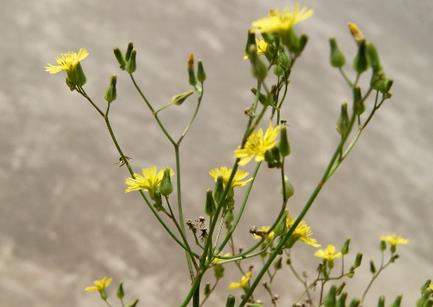
Morphological characteristics of Chrysanthemum morifolium
Perennial herbs, up to 1m high. The base of the stem is often creeping, the upper part is much branched. Leaves alternate, ovate-triangular or ovate-elliptic, long 3~9cm, pinnatifid, lobes serrate on margin, hairy on both sides, denser below; there are obvious false stipules under petiole. Head 2~2.5cm in diam., arranged in cymose; involucral bracts hemispherical, involucral bracts 4-layered, margin membranous, outer ellipsoid; flowers small, yellow, margin ligulate, apex 3-lobed, female; central tubular flower, apex 5-lobed, bisexual. The flowering period is from September to November and the fruiting period is from October to November.
Growth habits of Chrysanthemum morifolium
Like cool and humid climate, cold-resistant. It is suitable to be cultivated in loam with deep soil layer, loose and fertile soil and rich in humus. Mostly born in hillside grasslands, thickets, riverside wetlands, seaside saline land and field edge, roadside.
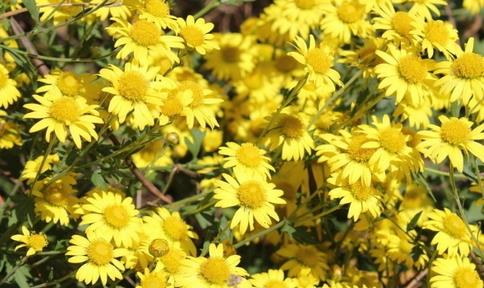
The Medicinal value of Chrysanthemum morifolium
Wild chrysanthemum has a bactericidal and detumescent effect on the redness and swelling of mosquito bites in summer.
1. Anti-infection: it can inhibit many kinds of pathogenic bacteria, such as Staphylococcus aureus, Shigella dysenteriae, Pseudomonas aeruginosa, typhoid bacillus and so on. In terms of heat-clearing and detoxification, wild chrysanthemum is more powerful than other drugs and is often used for influenza. Acute ☆ in the upper respiratory tract, eyes and throat prohibits ☆ infection and fever, resulting in viral infection, bacterial infection or mixed infection, as well as infectious redness and swelling of the skin.
Nowadays, with the popularity of antibiotics, wild chrysanthemum is rarely used for infectious diseases. But the wild chrysanthemum still has a chance to show its talents. Such as: ① virus infection and virus bacteria mixed infection; ② bacterial infectious diseases, the combination of antibiotics and Chinese herbal medicine. The effects of using Chinese herbal medicine are: ① antiviral; ② combined with antibiotics to increase efficiency; ③ to reduce toxins; ④ to enhance immune function; and ⑤ to improve symptoms, such as cooling, increasing food, assisting rehabilitation, and so on. This product has the comprehensive effect in many aspects, so it has become a commonly used anti-infective drug in traditional Chinese medicine.
2. About the treatment of cardiovascular disease: it has obvious inhibitory effect on platelet aggregation induced by ADP, Staphylococcus aureus and rabbit muscle collagen, and the effect is enhanced with the increase of dose. The inhibitory effect of wild chrysanthemum is 2.3-3.2 times stronger than that of Salvia miltiorrhiza and Codonopsis pilosula, and has many effects, such as crown expansion, blood pressure reduction, heart protection and so on. Traditional Chinese medicine is accustomed to using white chrysanthemum mainly for cardiovascular diseases. Wild chrysanthemums are generally not used.
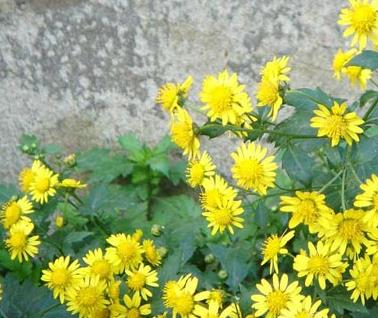
3. Antihypertensive effect: related to anti-adrenaline and dilatation of peripheral blood vessels, as well as inhibition of vascular motor center.
4. Other effects: enhance immune function, the concentration of wild chrysanthemum decoction LR1280 can promote human leukocyte phagocytosis of Staphylococcus aureus, enhance the heart and coronary artery, and significantly increase coronary flow. Coronary resistance decreased significantly and heart rate slowed down. Blood pressure and peripheral resistance decreased, cardiac output and stroke volume increased, and left ventricular work decreased, which were significantly different from those before administration. Its extract could significantly increase renal blood flow and decrease renal vascular resistance. The main components that can protect myocardium and dilate blood vessels are flavonoids, phenols and lactones; prevention and treatment of colds and influenza ☆ prohibition ☆ cold Treatment of various infectious inflammation, such as pharyngitis, tonsillitis, bronchitis, pneumonia, enteritis, etc.; treatment of sores, furuncle, abscess and other infections; cooling, antivenom and so on.
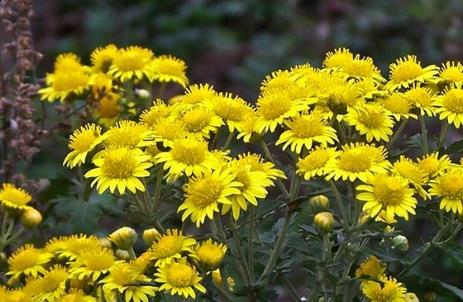
The implication of the flower language of wild chrysanthemum
The flower words and symbols of wild chrysanthemum represent meaning: silent and single-minded love, avoiding evil spirits.
People from northern Shaanxi pass Double-ninth Day at night, and the day is a whole day of harvesting and fighting. On the treetops in the evening, people like to enjoy buckwheat noodles and mutton. After dinner, people go out of their homes in twos and threes, climb the nearby hills, light the fire, talk, and wait for the chickens to bark before going home. When climbing at night, many people pick a few wild chrysanthemums and put them on their daughter's head at home to ward off evil spirits.
Coronary resistance decreased significantly and heart rate slowed down. Blood pressure and peripheral resistance decreased, cardiac output and stroke volume increased, and left ventricular work decreased, which were significantly different from those before administration. Its extract could significantly increase renal blood flow and decrease renal vascular resistance. The main components that can protect myocardium and dilate blood vessels are flavonoids, phenols and lactones; prevention and treatment of colds and influenza ☆ prohibition ☆ cold Treatment of various infectious inflammation, such as pharyngitis, tonsillitis, bronchitis, pneumonia, enteritis, etc.; treatment of sores, furuncle, abscess and other infections; cooling, antivenom and so on.

The implication of the flower language of wild chrysanthemum
The flower words and symbols of wild chrysanthemum represent meaning: silent and single-minded love, avoiding evil spirits.
People from northern Shaanxi pass Double-ninth Day at night, and the day is a whole day of harvesting and fighting. On the treetops in the evening, people like to enjoy buckwheat noodles and mutton. After dinner, people go out of their homes in twos and threes, climb the nearby hills, light the fire, talk, and wait for the chickens to bark before going home. When climbing at night, many people pick a few wild chrysanthemums and put them on their daughter's head at home to ward off evil spirits.
Related
- Wuhan Hospital Iron Tree Blooming Result Was Instantly Frightened by the Gardener Master
- Which variety of camellia is the most fragrant and best? Which one do you like best?
- What is the small blue coat, the breeding methods and matters needing attention of the succulent plant
- Dormancy time and maintenance management of succulent plants during dormancy
- Minas succulent how to raise, Minas succulent plant pictures
- What are the varieties of winter succulent plants
- How to raise succulent plants in twelve rolls? let's take a look at some experience of breeding twelve rolls.
- Attention should be paid to water control for succulent plants during dormant period (winter and summer)
- Watering experience of twelve rolls of succulent plants
- Techniques for fertilizing succulent plants. An article will let you know how to fertilize succulent plants.



